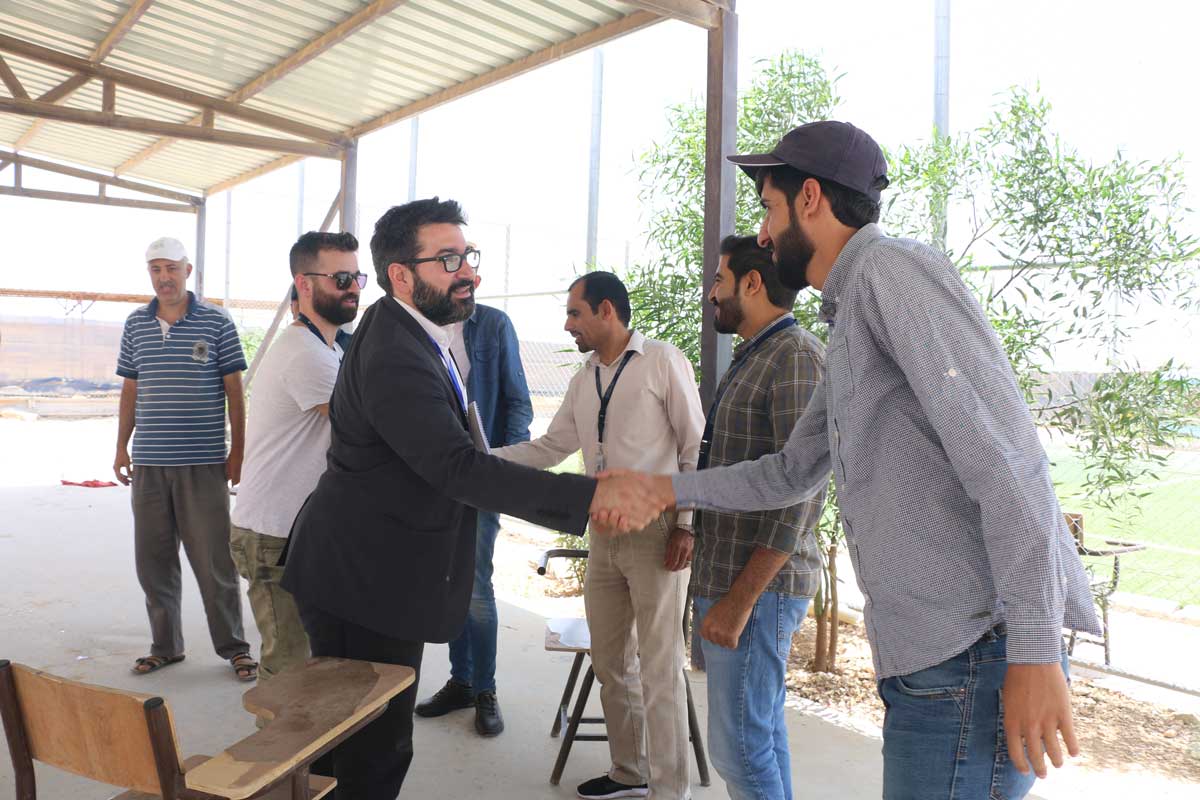Johan Lefebvre Chevallier is our Regional Director for the Middle East.
He joined Relief International in 2019 with nearly two decades of experience coordinating humanitarian responses and development programs in fragile settings like Afghanistan, Burundi, DRC, Haiti, Iraq, South Sudan, Rwanda, Syria and Yemen, among others
Here, he discusses how Relief International delivers emergency medical care in response to the Syrian crisis, despite multiple challenges.
How is Relief International helping Syrians inside their country?
We are providing a large scale health response for vulnerable people, many of whom have been displaced many times. We are providing primary health care at health centres, we are running emergency mobile clinics and are providing mental health support. We’re also supporting emergency health centres and hospitals in different areas. We’re working on reproductive health care, communicable and non-communicable disease services, community health work services and referrals as well as routine immunization. We’re also building the technical capacity of health facility staff.
Additionally, we are rehabilitating water systems in health centers, to provide lifesaving water supplies as well as reestablishing medical waste management.
Who accesses our healthcare?
We are serving population in need. Many are IDP’s (Internally Displaced People), or people with additional needs but also even those who haven’t been displaced are affected by the fact that there are very few health facilities remaining and functioning, in these times of crisis.
What are the main challenges of delivering aid inside Syria?
The Syrian civil war is one of the most complex crises of 21st century. The nature of the conflict and the scale of the needs and response are almost unprecedented. The fluidity of the context and numerous stakeholders involved in the conflict makes access one of the most challenging components. We are taking an important level of risk in order to serve populations in need. Many families and individuals face multiple displacement, they have lost everything several times over.
How do we operate in the country?
The volatility of the context means we constantly have to adapt our operational capacity and modalities and use a variety of delivery methods to reach vulnerable populations by any means necessary.
We have to be agile, innovative and creative to serve populations in need. We also have a strong understanding of risk management. We deliver healthcare directly, but we also ensure good coordination with local implementing partner organizations on the ground. We also manage some of our work remotely, depending on the area of needs.
We have observed that continuity of services is a challenge due to the ongoing conflict. Ground and air movement make it hard to ensure continuity of healthcare in a safe way for the population and for the staff.
Since conflict broke out in 2011, Syria’s civil war has claimed more than 500,000 lives and caused 6.2 million people, including 2.5 million children, to be displaced within the country, the biggest internally displaced population in the world. Relief International has worked in Syria since 2012.
